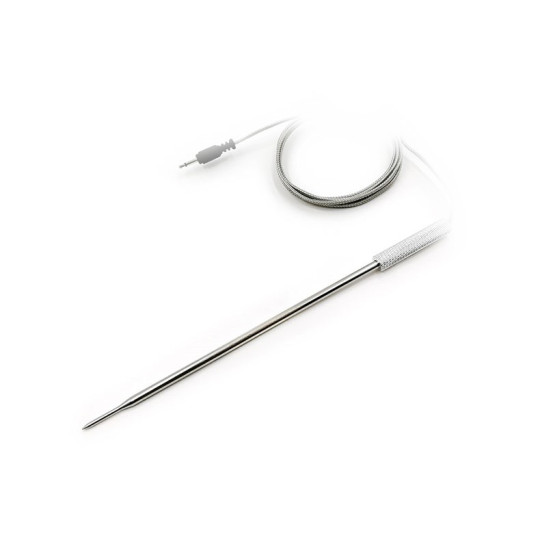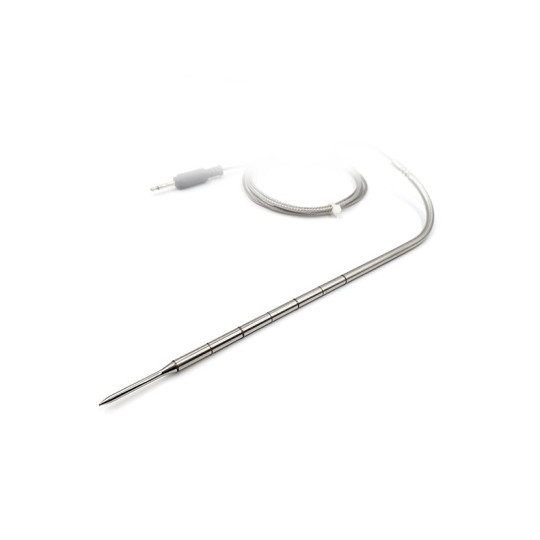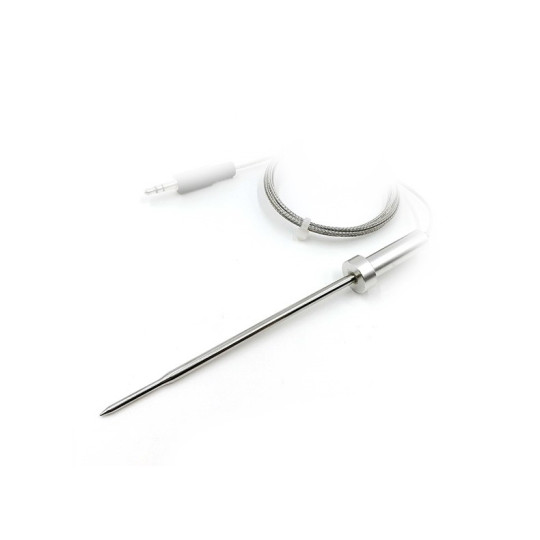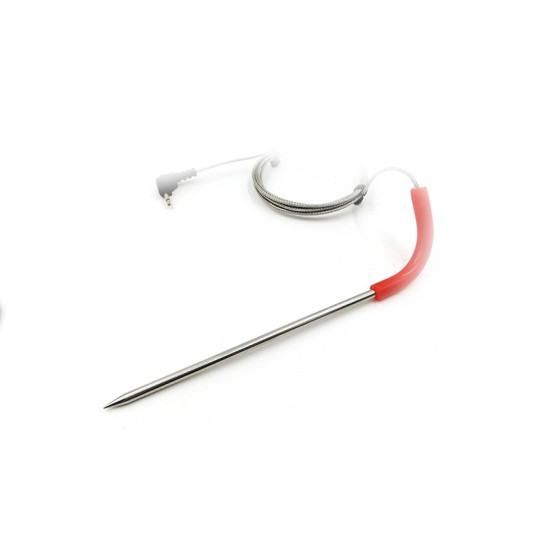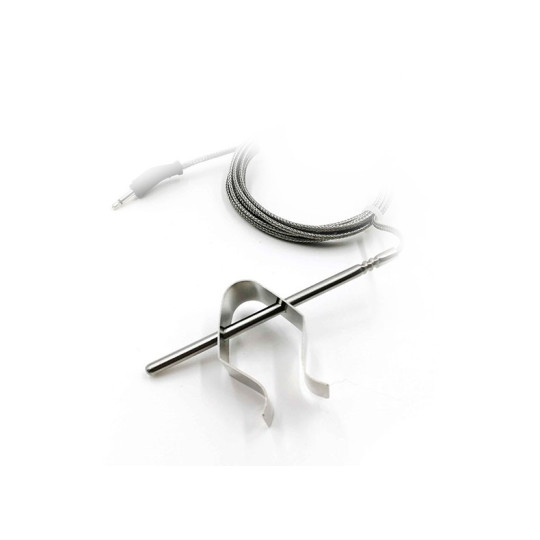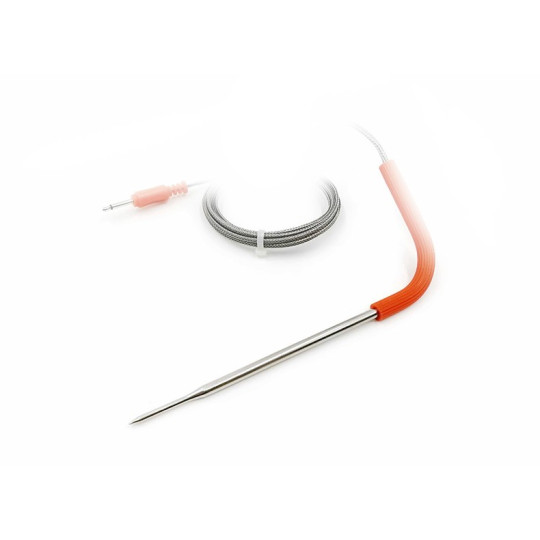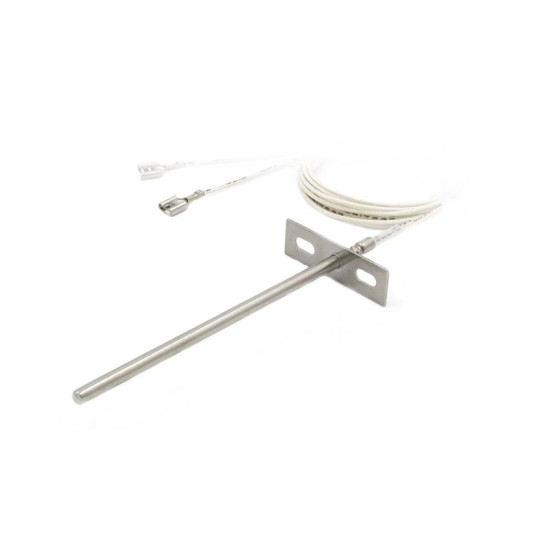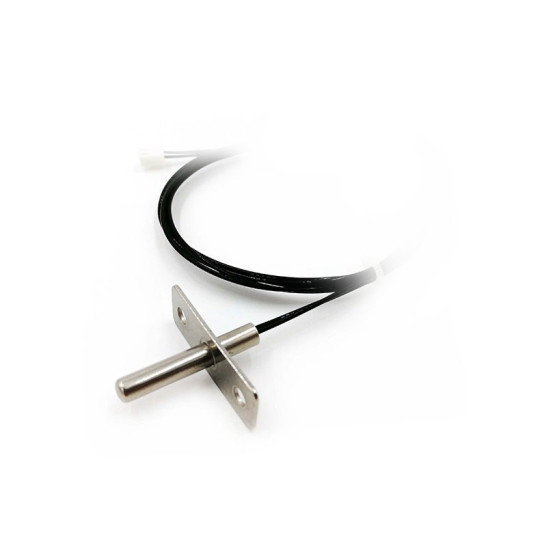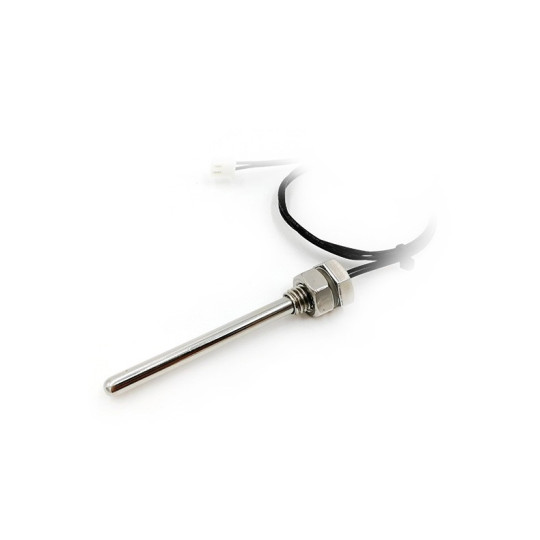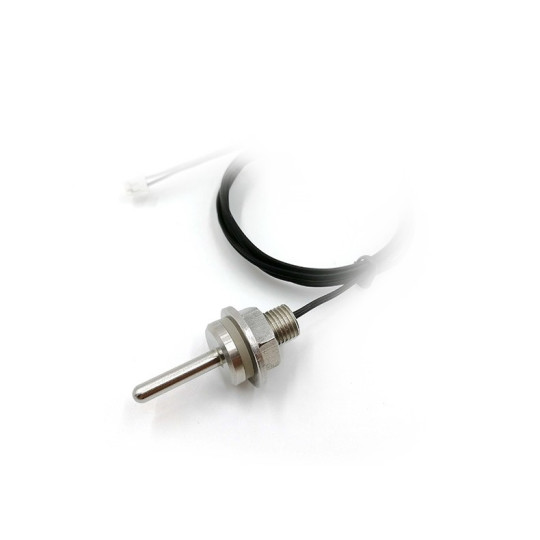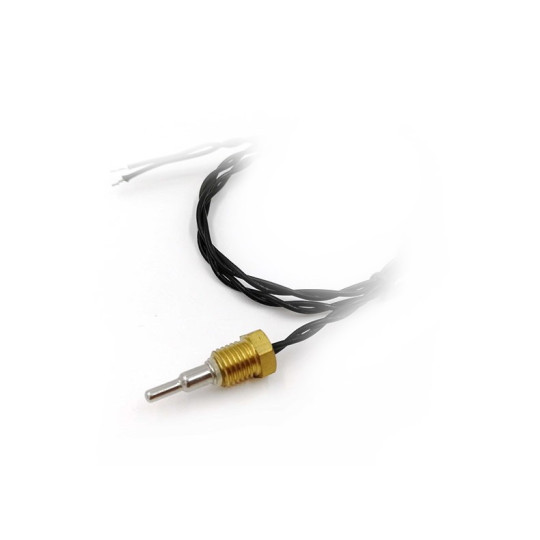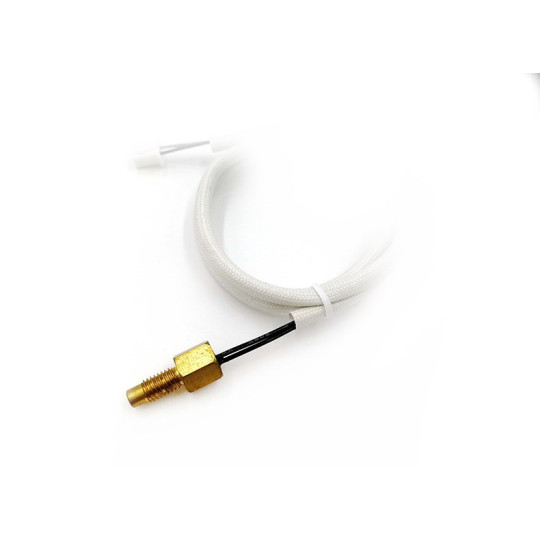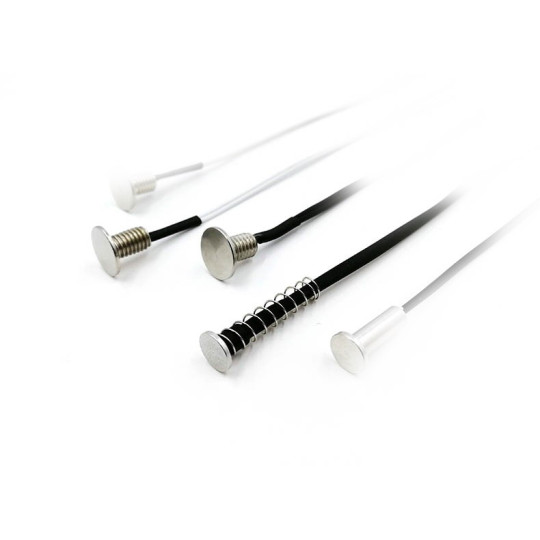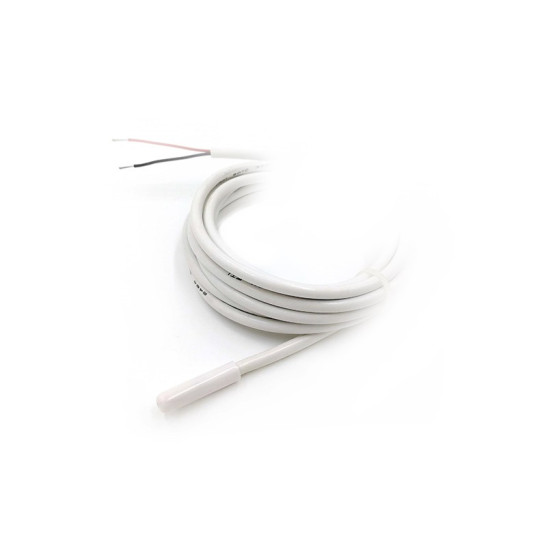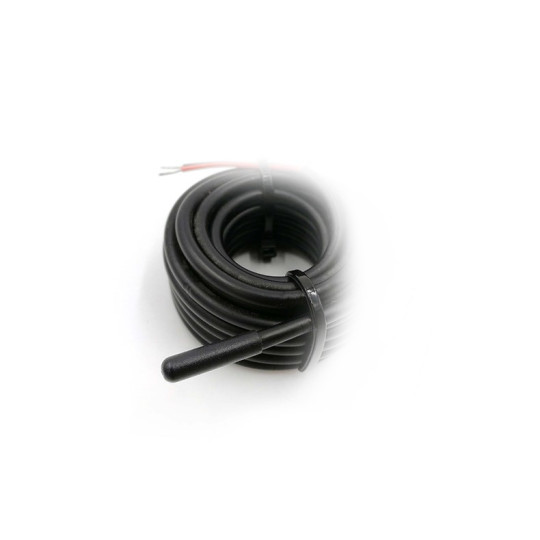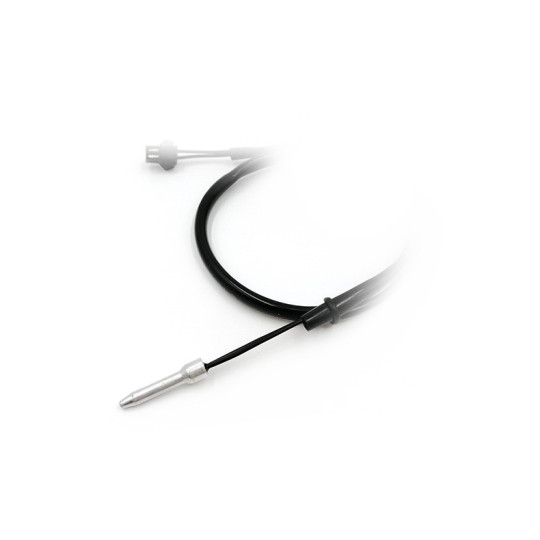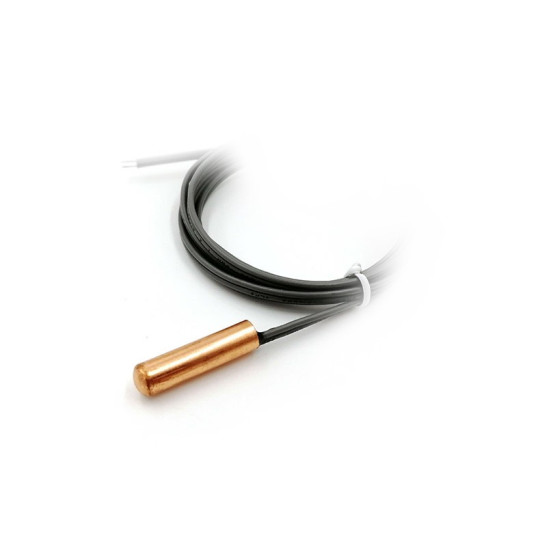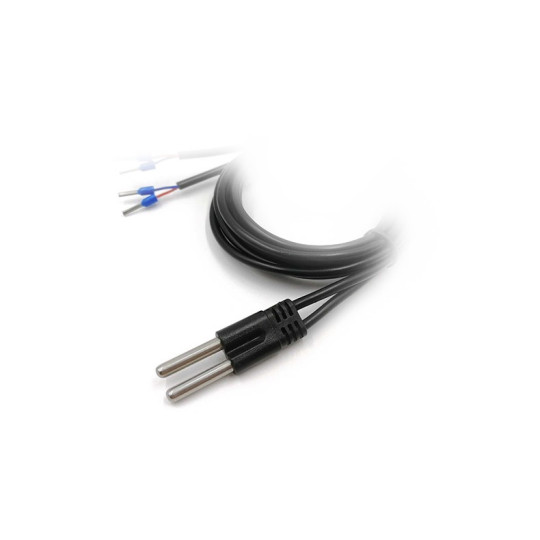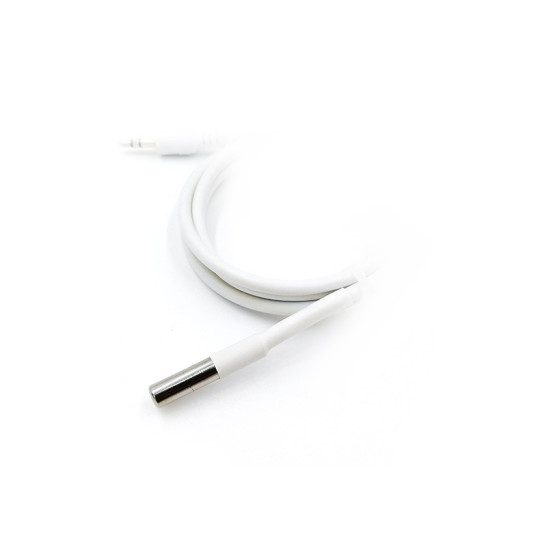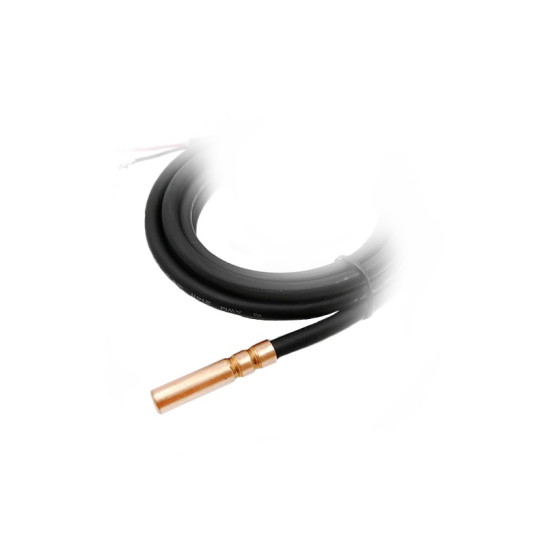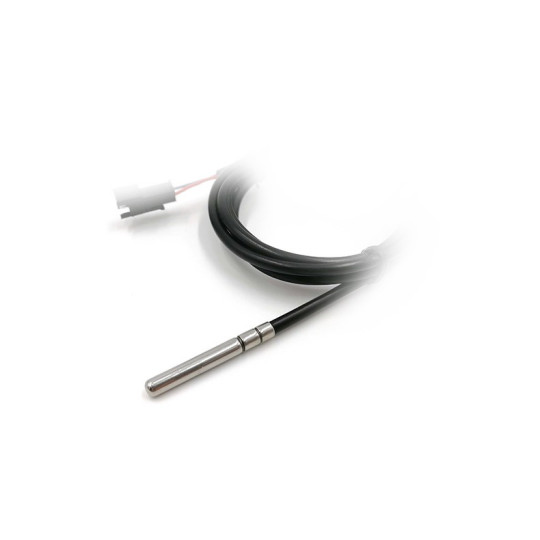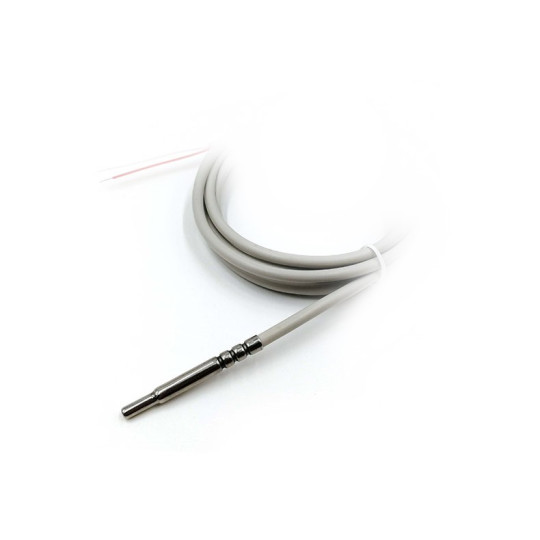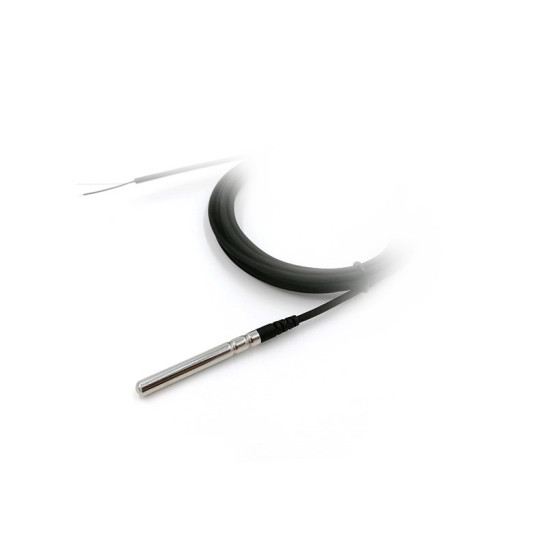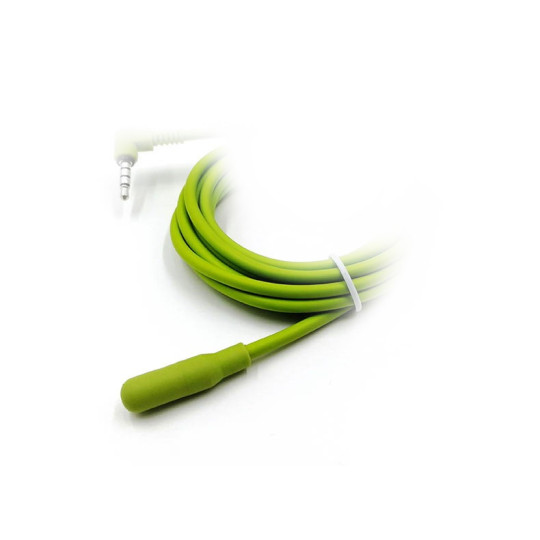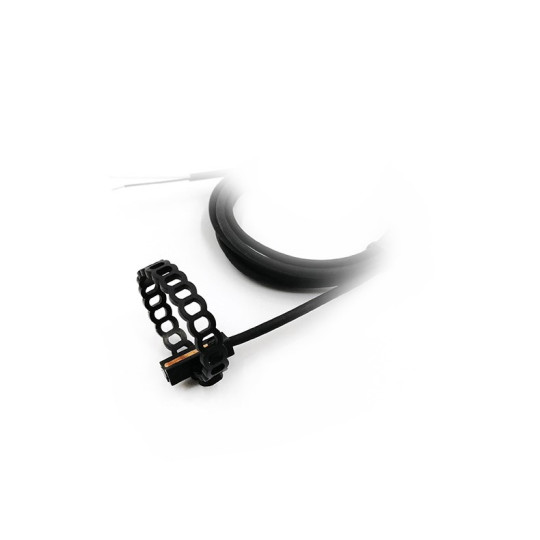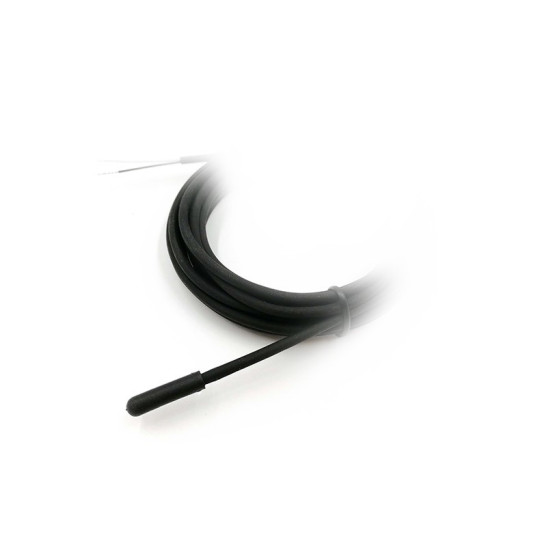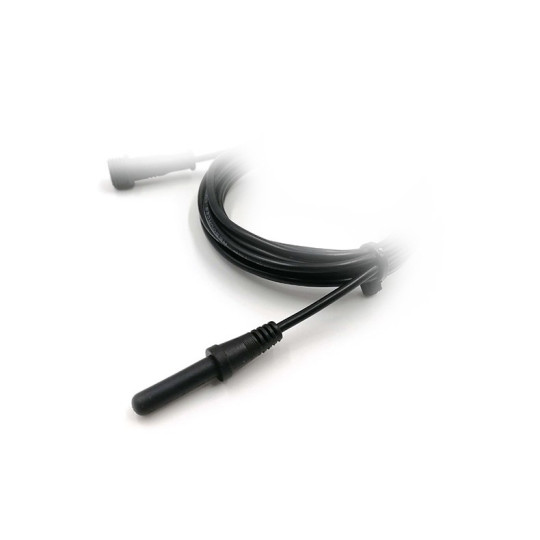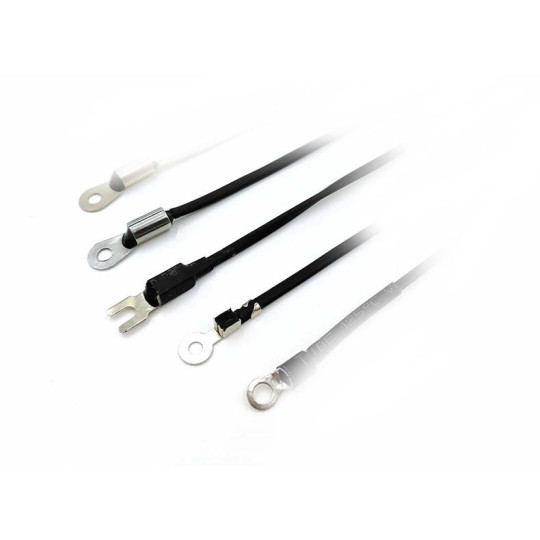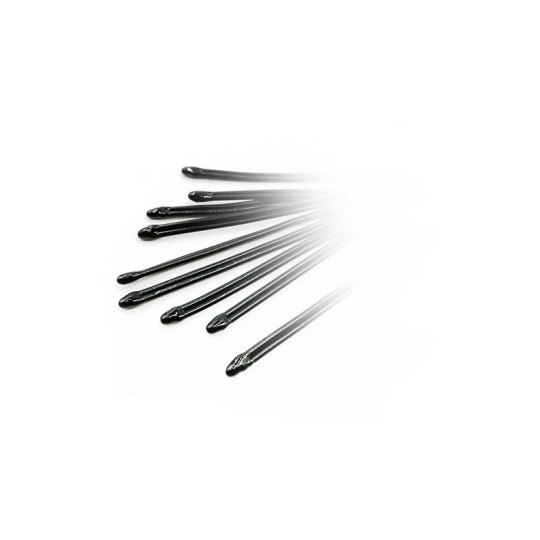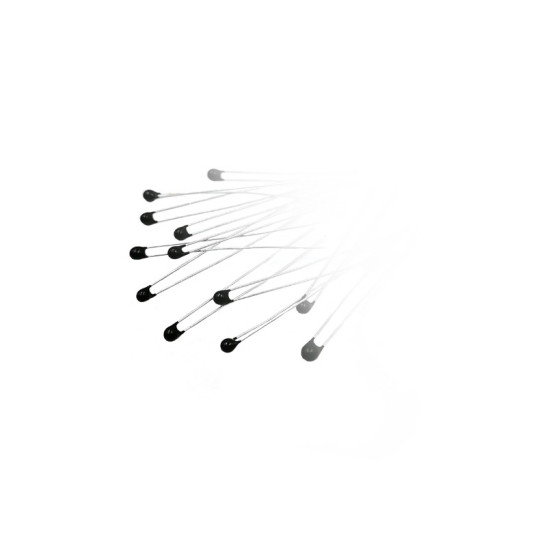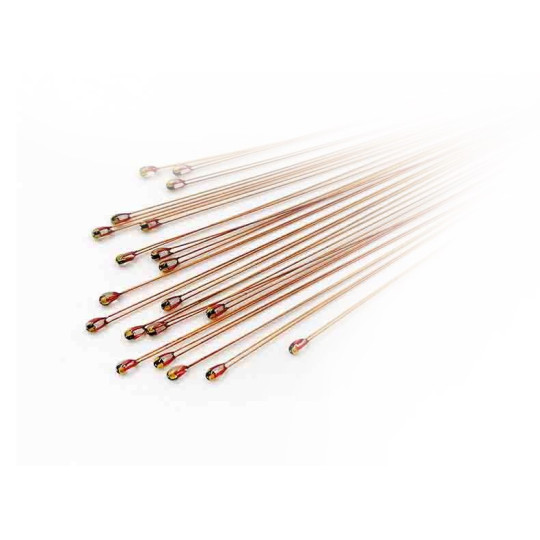ALL ABOUT
NTC thermistor sensors
These thermistors are mainly used as resistive temperature sensors and current limiting devices. The temperature sensitivity coefficient is about five times greater than that of silicon temperature sensors (silistors) and about ten times greater than that of resistance temperature detectors (RTDs). NTC sensors are generally used in the temperature range of -55 ° C to 200 ° C. Unlike resistance temperature detectors, which are made from metals, NTC thermistor temperature sensors are generally made of ceramics or polymers. Different materials used result in different temperature responses, as well as other characteristics.
The temperature sensitivity of an NTC sensor is expressed in "percentage change per degree ° C". Depending on the materials used and the specifics of the production process, typical values for temperature sensitivities range from -3% to -6% per ° C.
While most NTC thermistor measurement probes are generally suitable for use in the temperature range of -55°C to 200°C, when giving their most accurate readings, there are special families of probe CTNs suitable for use at temperatures close to absolute zero (-273,15°C) as well as those specially designed for use above 150°C.
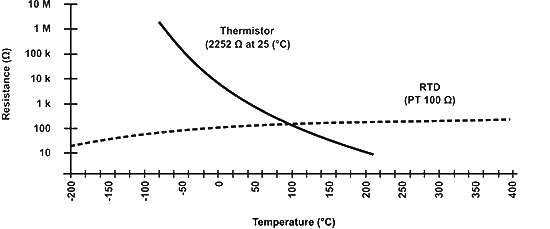 |
As can be seen in the figure, NTC thermistors have a much steeper resistance-temperature slope than platinum-alloy RTD meters, which results in better sensitivity for temperature detection.
Despite everything, RTD sensors (Pt100 type PLATINUM RESISTANCE THERMOMETERS) remain the most accurate sensors with an accuracy of ± 0,5% of the measured temperature and they are useful in the temperature range between -200 ° C and 800 °C, a much wider range than NTC temperature sensors.
Compared to RTD, the NTC they have a smaller size, faster response, greater impact and vibration resistance at lower cost.
That said, this type of probe offers slightly less precise temperature control than RTDs.
Compared to the thermocouple probe, the accuracy of temperature measurement is similar. However, thermocouples can withstand very high temperatures (up to over 1000°C) and are used in such applications instead of NTC - NTC thermistors, where they are sometimes called pyrometers.
Despite this, the thermistors NTC offers higher sensitivity, stability and accuracy than thermocouples at lower temperatures. In addition, NTC thermistor meters are used with fewer additional circuits and therefore at a lower total cost.
Cost is further reduced by the lack of need for signal conditioning circuits (amplifiers, level converters, etc.) often needed for RTDs and always needed for thermocouples.
Risk of self-heating
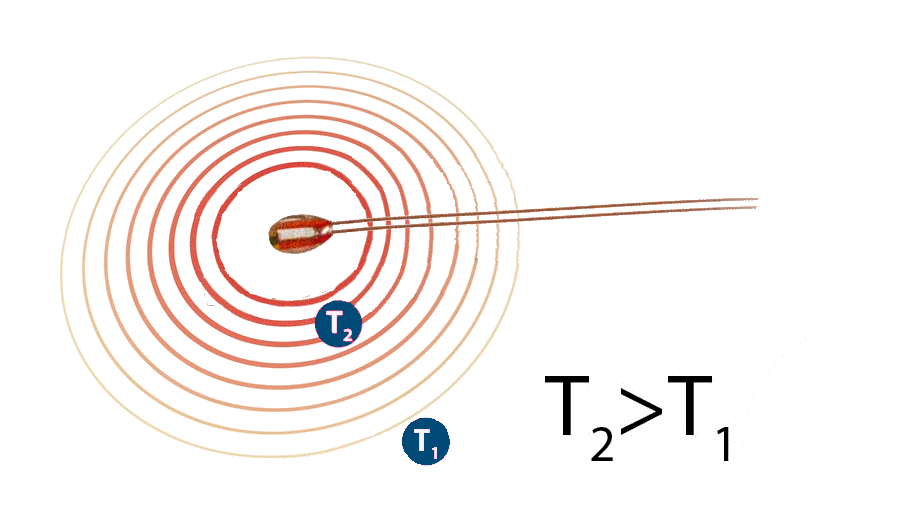 The self-heating effect is a phenomenon that occurs whenever a current flows through the NTC thermistor measurement probe. As the thermistor is basically a resistor, it dissipates energy as heat when there is a current flowing through it.
The self-heating effect is a phenomenon that occurs whenever a current flows through the NTC thermistor measurement probe. As the thermistor is basically a resistor, it dissipates energy as heat when there is a current flowing through it.
This heat is generated in the center of the thermistor and affects measurement accuracy. The extent to which this happens depends on the amount of current flowing, the environment (whether it is liquid or gas, whether there is flux on the NTC sensor, etc. .), thermistor temperature coefficient, and thermistor status.
The fact that the resistance of the NTC sensor and therefore the current flowing through it depends on the environment is often used in detectors for the presence of liquids such as those found in storage tanks.
Thermal capacity
The thermal capacity represents the quantity of heat necessary to increase the temperature of the thermistor of 1 ° C and is usually expressed in mJ/°C. Knowing the precise heat capacity is of great importance when using an NTC thermistor sensor as an inrush current limiting device, as it defines the response speed of the NTC temperature sensor.
Selection and calculation of the curve
The rigorous selection process must take into account the dissipation constant of the thermistor, the thermal time constant, the resistance value, the resistance-temperature curve and tolerances, to mention the most important factors.
Since the relationship between resistance and temperature (the RT curve) is highly non-linear, certain approximations must be used in practical system designs.
![]()
First order approximation: When k is the negative temperature coefficient, ΔT is the temperature difference, and ΔR is the resistance change resulting from the temperature change. This first-order approximation is valid only for a very narrow temperature range and can only be used for temperatures where k is almost constant over the entire temperature range.
![]() Beta formula: Another equation gives satisfactory results, with an accuracy of ±1°C over the range of 0°C to +100°C. It depends on a single material constant β obtainable by temperature measurements. The equation can be written as follows:
Beta formula: Another equation gives satisfactory results, with an accuracy of ±1°C over the range of 0°C to +100°C. It depends on a single material constant β obtainable by temperature measurements. The equation can be written as follows:
Where R (T) is the resistance at temperature T in Kelvin, R (T 0 ) is a reference point at temperature T 0 . The beta formula requires a two-point calibration, which is typically no more accurate than ±5°C over the entire useful range of the NTC thermistor.
![]()
Steinhart-Hart equation: The best known approximation to date is the Steinhart-Hart formula, published in 1968. Where ln R is the natural logarithm of the resistance at temperature T in Kelvin, and A, B and C are coefficients derived from experimental measurements.
These coefficients are usually published by thermistor suppliers in the datasheet. The Steinhart-Hart formula is typically accurate to within about ±0,15°C over the range of -50°C to +150°C, which is sufficient for most applications.
If higher accuracy is required, the temperature range should be reduced and accuracy better than ± 0,01 ° C over the range of 0 ° C to + 100 ° C is possible.
The choice of formula used to calculate the temperature from the resistance measurement should be based on the available computing power, as well as the actual tolerance requirements.
In some applications a first-order approximation is more than sufficient, while in others even the Steinhart-Hart equation fails the requirements.
In this case, the NTC thermistor temperature probe must be calibrated point by point, performing a large number of measurements and creating a correspondence table.
.png) Epoxy encapsulated thermistors
Epoxy encapsulated thermistors
These NTC thermistor probes are made from metal oxides (manganese, cobalt, copper and nickel) sintered into the ceramic body.
They generally offer quick response times, better stability and allow operation at higher temperatures than Disk and Chip NTC sensors, but they are more fragile.
It is common to seal them in glass, to protect them against mechanical damage during mounting and to improve their measurement stability. Typical sizes range from 0,075 to 5 mm in diameter.
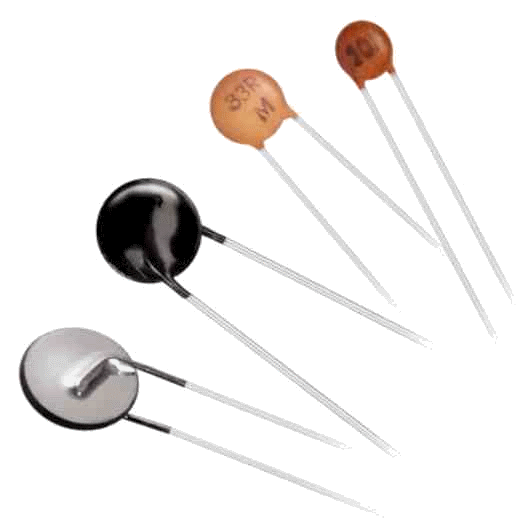 Disc and chip thermistors
Disc and chip thermistors
These NTC thermistor meters have metallized surface contacts. They are larger and have slower reaction times than ball type NTC resistors.
However, due to their size, they have a higher dissipation constant (power required to raise their temperature by 1°C) and, since the power dissipated by the thermistor is proportional to the square of the current, they carry currents higher type thermistors.
Disc thermistors are made by pressing a mixture of oxide powders into a round die, which is then sintered at high temperature. Chips are usually made by a tape molding process where a slurry of material is spread into a thick film, dried and cut. Typical sizes range from 0,25 to 25 mm in diameter.
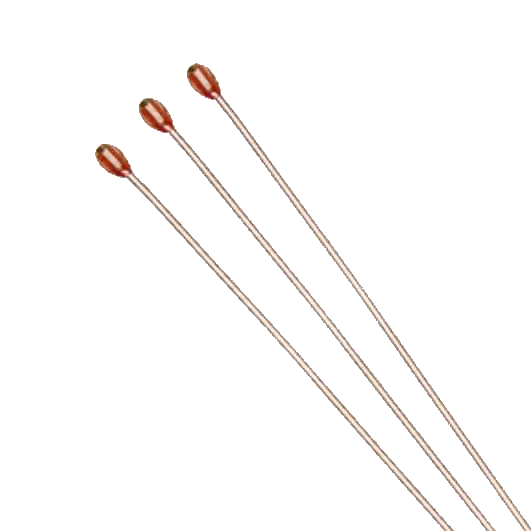 NTC thermistors encapsulated in glass
NTC thermistors encapsulated in glass
These are NTC temperature sensors sealed in an airtight glass bubble. They are designed for use with high temperatures (above 150°C) or for mounting on a printed circuit board, where robustness is essential.
Encapsulating a thermistor in the glass improves sensor stability and protects the sensor from the environment. They are made by hermetically sealing bead type NTC resistors in a glass container. Typical sizes range from 0,4 to 10 mm in diameter.
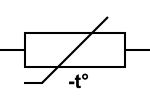
I CAN'T FIND MY PROBE , HOW CAN YOU HELP ME?
We will always be able to offer you the reliable, precise and robust probe you are looking for.
On our website we present a wide variety of temperature probes. Know that you can also customize your product on all specifications or make a request starting from a technical drawing in order to create your probe. To this end, do not hesitate to contact us for a tailor-made offer. We then take care of delivering your temperature probe to you as soon as possible.
